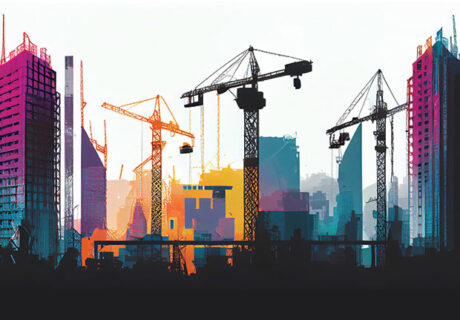Fair Haven Community Health Care Aims To Tackle Population Health Through Clinic Design
Scheduled to open in early 2025, Fair Haven Community Health Care (FHCHC) in Fair Haven, Conn., will integrate healthcare and wellness services under one roof to address population health and create a vibrant community hub.
The project team conducted bilingual community listening sessions to gather feedback from community stakeholders on the program as well as the look and feel of the building.
The result is a 35,560-square-foot building for health, education, and community services that reflects the character and needs of its neighborhood.

Bill Wolpert, E4H Environments for Health Architecture (Headshot credit: E4H Environments for Health Architecture)
Here, associate Bill Wolpert, senior project manager at E4H Environments for Health Architecture (Burlington, Vt.), talks about meeting the project’s goals and how health centers can support culturally diverse communities.
What unmet needs in the community does this project aim to address?
Fair Haven residents include a significant population of new citizens and non-citizens who experience the common struggles of lower incomes, food insecurity, lack of affordable housing, and job instability. These factors contribute to higher rates of preventable disease and substance abuse than wealthier, neighboring communities; and COVID-19 exacerbated these challenges.
Our goal with this facility is to create a safe, healthy building that provides culturally sensitive access to medical and behavioral healthcare while serving as a community hub.
How did that goal drive the planning and design of the new health center?
Programming focuses on providing tools for community members to improve their health and well-being. A fresh food “farmacy” and teaching kitchen are designed to address food insecurity and provide nutrition education. Shared community spaces support programs such as job training and digital health literacy.
The building design mirrors the neighborhood vernacular, and the façade includes space for artwork or murals, further integrating the building with the community.
Additionally, biophilic design elements, including a pocket park and roof terraces, connect building users with nature, which is linked to improved health.
How did community input help guide the design of the project?
The client and design team conducted bilingual community listening sessions to gather feedback from community stakeholders on the program as well as the look and feel of the building.
In response to a need to maintain vital community resources, a ground-level retail pharmacy was added to the facility. Additionally, the façade walls are designed to showcase local artwork, serving as an opportunity to reflect the character of the neighborhood.
What’s the biggest challenge in addressing population health through facility design?
Understanding and coordinating the stakeholder dynamics. Community health centers are a resource to many health, education, cultural, and community organizations.
Planning flexibility in use and letting many voices be heard brings fresh insight and creativity to the table.
How is demand for holistic health and wellness services shaping the industry?
We’re witnessing greater demand for community health centers that provide a “single stop” to address physical and mental health, wellness, and educational needs.
Not only is this model growing in popularity in underserved communities where care access and transportation limitations exist, but it’s well suited for growing culturally diverse communities as well.
For a First Look on this project, go here.
Anne DiNardo is editor-in-chief of Healthcare Design. She can be reached at anne.dinardo@emeraldx.com.



